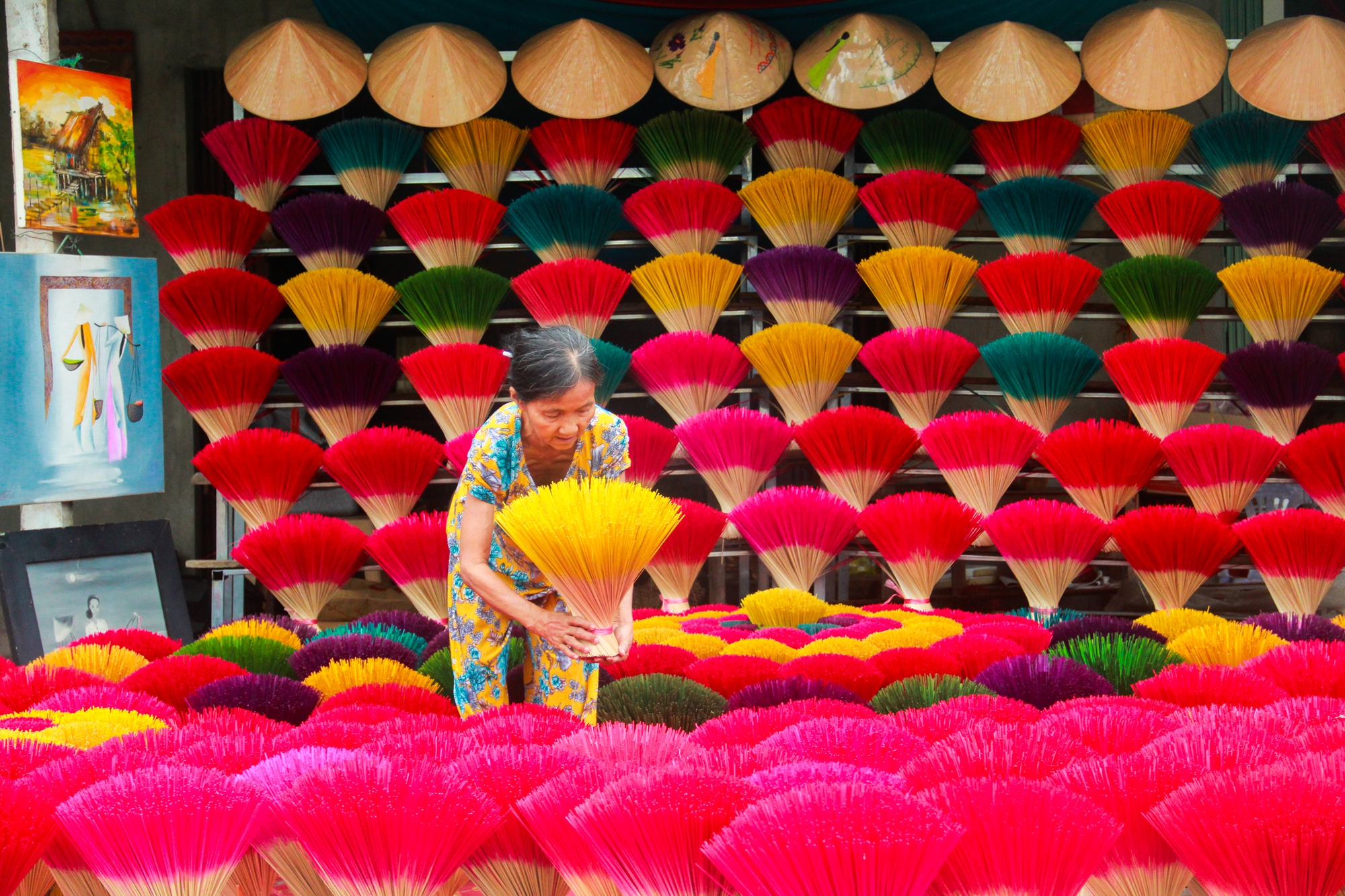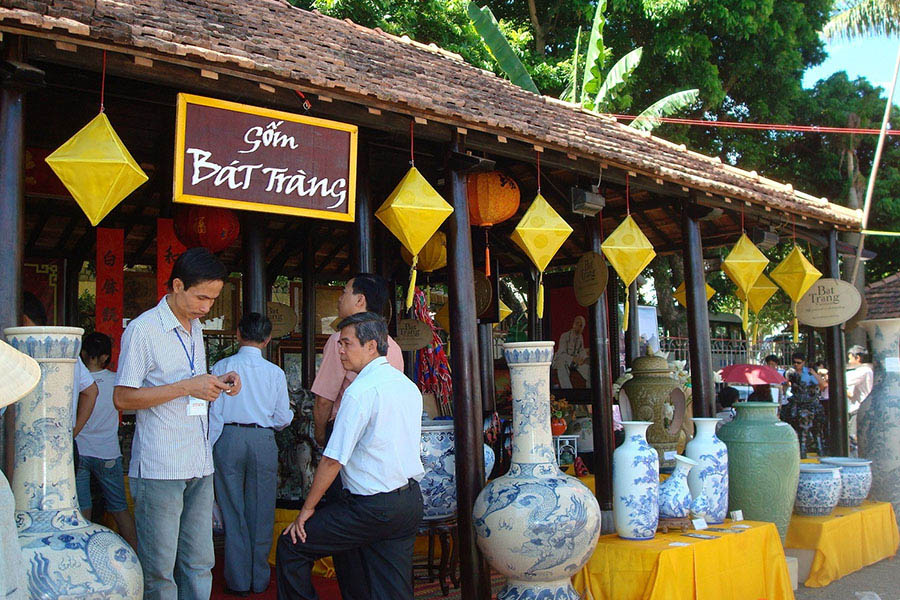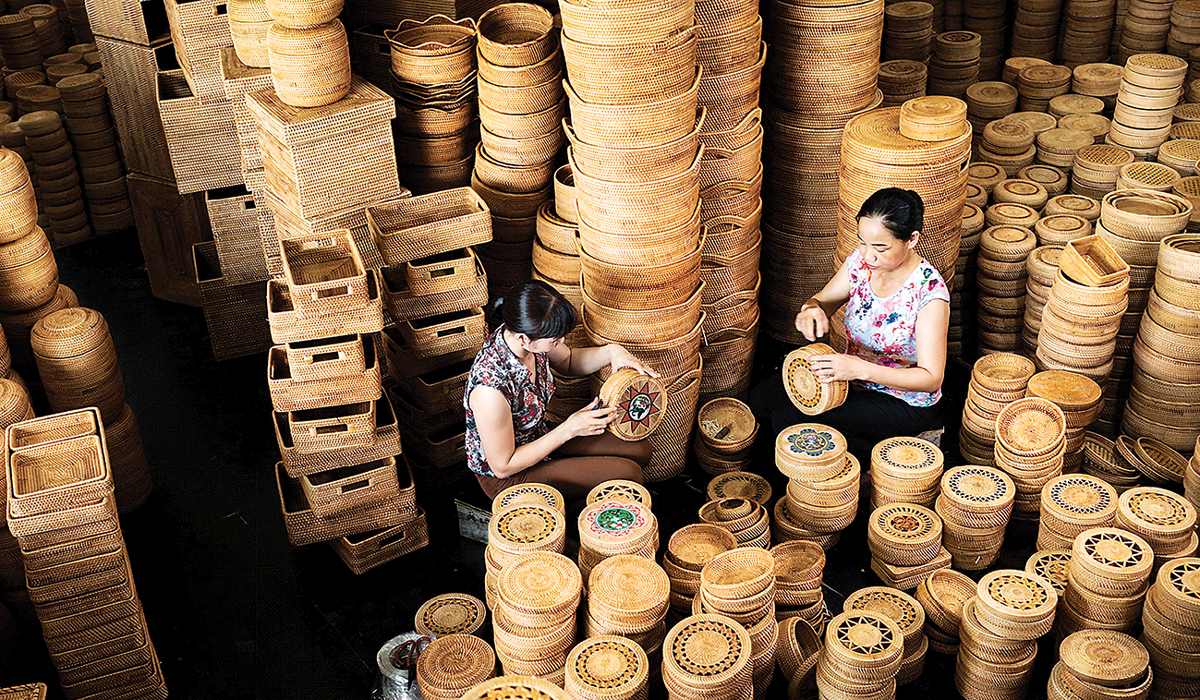
According to the Vietnam Association of Craft Villages, Vietnamese handicrafts have strong export potential. Export turnover has shown steady growth, with Vietnamese products now present in 163 countries, including major markets such as the United States, the EU, Japan, South Korea, and Australia.
In 2023, Vietnam’s handicraft exports reached approximately USD 3.5 billion. The goal is to increase that to around USD 4 billion by 2025 and strive for USD 6 billion by 2030.
Trinh Quoc Dat, Chairman of the Association of Craft Villages, said that Vietnam currently has favorable conditions to promote handicraft production. Consumers worldwide are increasingly shifting toward sustainable, handcrafted products made from natural materials such as bamboo, rattan, wood, and recycled paper. These products are not only environmentally friendly but also rich in uniqueness and local cultural identity.
Stuck in a low-value tier
As e-commerce rapidly expands, Vietnam is now among the top three e-commerce markets in Southeast Asia. Many handicraft businesses are already selling online through platforms like Amazon, Handmade, Etsy, Lazada, and Tiki, making it easier to reach international customers.
However, the sector also faces significant challenges in export markets. Competition from low-cost industrial products from China, India, and Indonesia is becoming increasingly fierce. In addition, tariff barriers imposed by major importing countries such as the United States place further pressure on Vietnam's handicraft exports.
Vu Hy Thieu, Chairman of the Advisory Council of the Hanoi Handicraft Village Association, pointed out that one of the biggest weaknesses of Vietnamese handicrafts is the limited understanding of aesthetics and design skills, which restricts the development of product models. This is evident in many products that tend to be overly elaborate and focused on excessive technical craftsmanship. Furthermore, some artisans have been found to imitate the designs of foreign products.
“Thanks to a deep understanding of material characteristics and a strong sense of resourcefulness, Vietnamese artisans are highly skilled at using available materials. Even tree roots or bamboo stumps can be turned into artistic products, with almost nothing going to waste. However, such meticulous craftsmanship and clever use of natural materials are still not enough to create innovative products that meet the evolving aesthetic demands of high-income markets,” Thieu expressed with concern.

Vietnamese handicrafts not only struggle in terms of aesthetics and design, but also suffer from limited understanding of markets and emerging technical solutions. This restricts artisans’ creative capacity, reduces product value, and results in low incomes for many craft workers. According to Mr. Vu Hy Thieu, although Vietnamese products are still diverse, they are not highly rated, difficult to sell, and largely stuck in low-value market segments. This becomes especially evident at international trade fairs and when compared to foreign products in export contracts.
Analyzing the causes of these limitations, Assoc. Prof. Dr. Nguyen Thua Loc from the National Economics University points out that many stem from the inherent characteristics of traditional craft villages. The challenges have been exacerbated by the impacts of the Fourth Industrial Revolution, international economic integration, and digital transformation — all of which have intensified the existing weaknesses of small-scale, fragmented, and manual production models.
Meeting traceability requirements remains a major challenge, especially in the European market. Some villages also face unstable supply chains and inconsistent material quality.
“Our products are technologically outdated, of lower quality, and unable to compete on price with regional or global counterparts,” Dr. Loc noted. “Moreover, many cooperatives and small businesses struggle to access capital or promote their products effectively in international markets.” He also pointed out that due to the lack of training among village owners and workers, they are not prepared to absorb the advancements of the Fourth Industrial Revolution. As a result, adapting to the high demands of digital transformation remains difficult, affecting both competitiveness and innovation.
A new mindset for market development
In response to these challenges, Mr. Trinh Quoc Dat emphasized the need for comprehensive solutions. First, domestic raw material areas supplying craft villages must be sustainably planned, with proper certification for legal and traceable sourcing — including those extracted from natural resources.
Second, workforce development needs more attention. Training systems should combine the artisanal transfer of traditional skills with formal technical education at vocational schools, colleges, and institutions like the University of Industrial Fine Arts.
In particular, market research and consumer behavior — especially in major markets such as the US, EU, and Japan — must inform product design. At the same time, trade promotion should be strengthened through exhibitions, domestic and international trade fairs, and collaboration with global distribution networks and retail centers.
To grow the market for handicraft products, Dr. Loc stressed the need for a shift in mindset among craft village owners and workers. Embracing modern sales methods, sustainable business practices, and regional/international integration must become new standards.
In addition, investment in design and innovation is crucial. He suggested encouraging design competitions and collaboration between artisans and designers to create unique, culturally enriched, and functional products that enhance customer experience. Multi-channel distribution strategies should be developed to maximize market reach and customer access.

“We must pay special attention to leveraging e-commerce effectively by developing online trading platforms specifically for handicraft products. At the same time, building strong branding, telling the product’s story, and ensuring traceability are essential to enhance credibility and competitiveness,” emphasized Assoc. Prof. Dr. Nguyen Thua Loc. He also recommended forming a national “Vietnam Craft Village Association” network to facilitate experience sharing, organize joint exhibitions, and boost competitiveness in global markets.
Sharing the same view, Assoc. Prof. Dr. Dang Mai Anh from the University of Industrial Fine Arts stated that digital marketing can significantly amplify the visibility of Vietnamese handicrafts, helping them reach a broader international audience. She stressed that innovation and creativity in product design are key to meeting consumer tastes, attracting business partners, and gaining a deserved position in international markets.
To increase the value of Vietnamese handicrafts, Mr. Vu Hy Thieu emphasized that the most important issue is to help artisans improve their creative capacity and develop new designs that align with market demands.
“Based on the experience of many experts, advisory services have proven to be the most effective and practical approach. We must select suitable consultants, with clear goals and tailored programs adapted to each target market and planned export timeline. In parallel, producers should assign highly skilled and creative artisans to promptly realize new designs generated during the consultation process,” Mr. Thieu suggested.
Source: vneconomy.vn




